Taiwan has moved one important step closer to building its first indigenous submarines, with the opening of a shipyard intended to construct this new class of boats to help overhaul the Republic of China Navy’s existing, aging fleet. Taiwanese President Tsai Ing Wen presided over the ribbon-cutting ceremony, declaring that the program “demonstrates Taiwan’s strong will to the world to protect its sovereignty.”
The inauguration of the submarine-focused shipyard in Kaohsiung in southern Taiwan on November 24, 2020, sets in motion plans to construct eight new diesel-electric submarines under the Taiwan National Non-Nuclear Submarine Design and Construction Program, which is being run by the National Chung-Shan Institute of Science and Technology (NCSIST) with technical assistance from the United States. The first of these boats is expected to enter service by 2025 and all eight will be built by Taiwan’s China Shipbuilding Corporation (CSBC).
“Submarines are important equipment for the development of Taiwan’s navy’s asymmetric warfare capabilities and to deter enemy ships from encircling Taiwan,” said President Tsai at yesterday’s ceremony. As well as making a strong signal to Beijing about Taiwan’s ability to defend itself, the submarine-building project also serves to boost the island’s defense self-sufficiency.
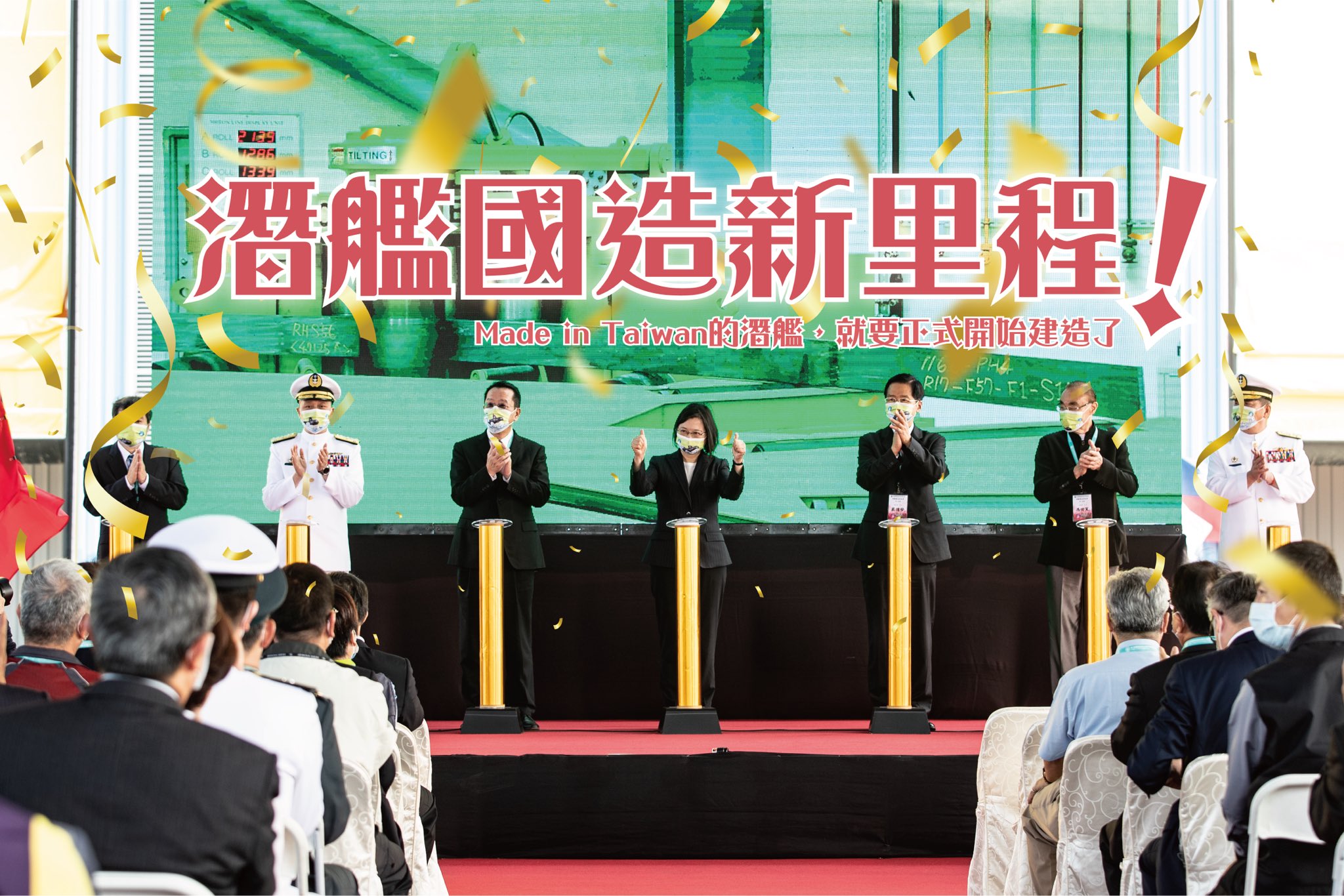
Compared to the rapidly expanding People’s Liberation Army Navy (PLAN), which operates a large submarine fleet with increasingly modern and capable types, and that has recently been notably active in the Taiwan Strait, the underwater fleet of the Republic of China Navy (ROCN) is currently decidedly outmatched. Taiwan’s submarine fleet today includes just two Chien Lung class submarines and two Hai Shih class submarines based at Tsoying Naval Base in Kaohsiung.
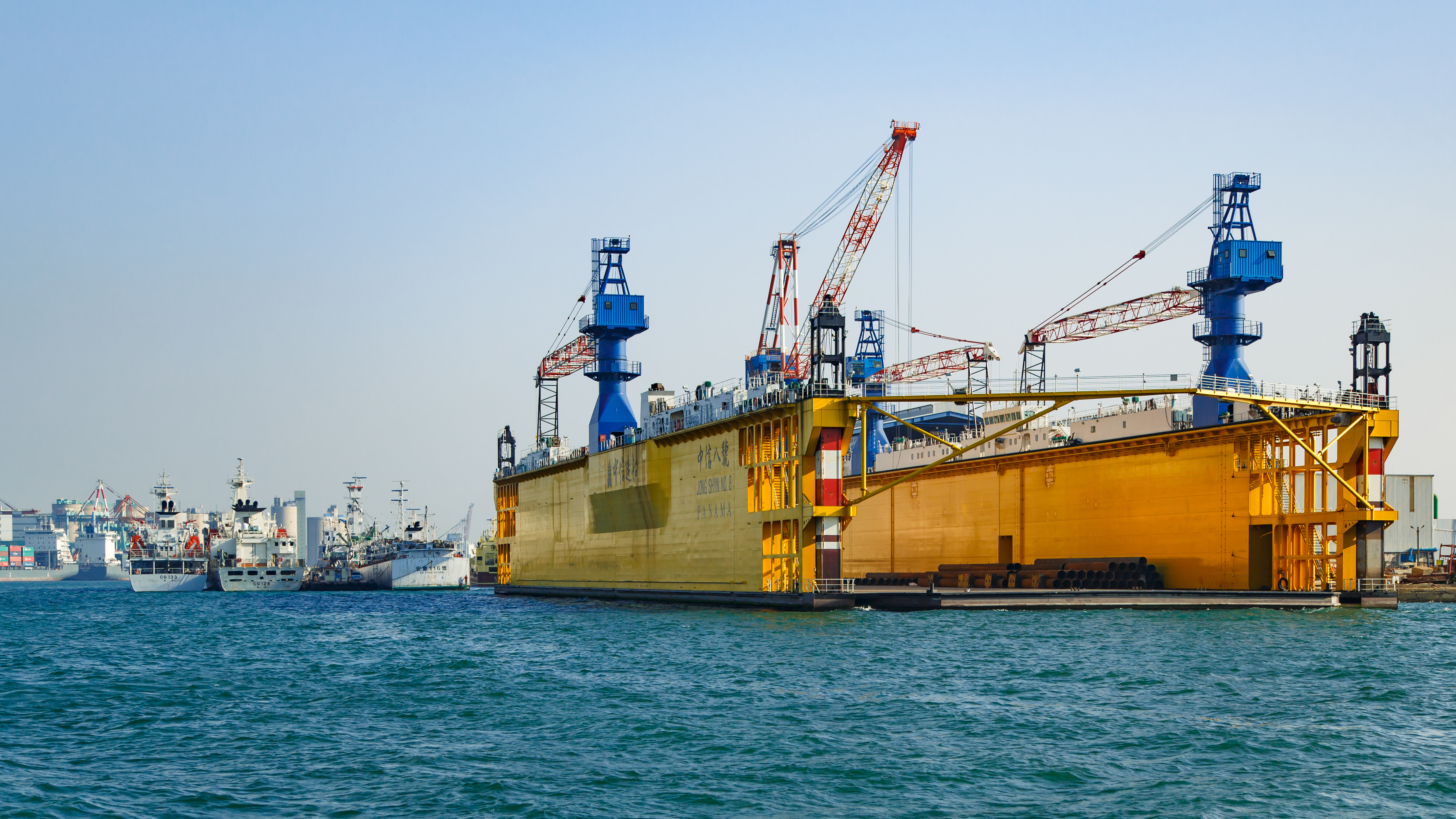
The Hai Lung class diesel-electric attack submarines were built in the Netherlands in the mid-1980s. A modified version of the Dutch Zwaardvis class design, they are 219 feet long, can travel at a reported speed of 20 knots, and can carry up to 28 torpedoes.
A mid-life upgrade for the Hai Lung class was launched in 2016 with the aim of keeping these boats in service for another 15 years. It’s worth noting that the Dutch Navy retired its Zwaardvis class boats in the mid-1990s.
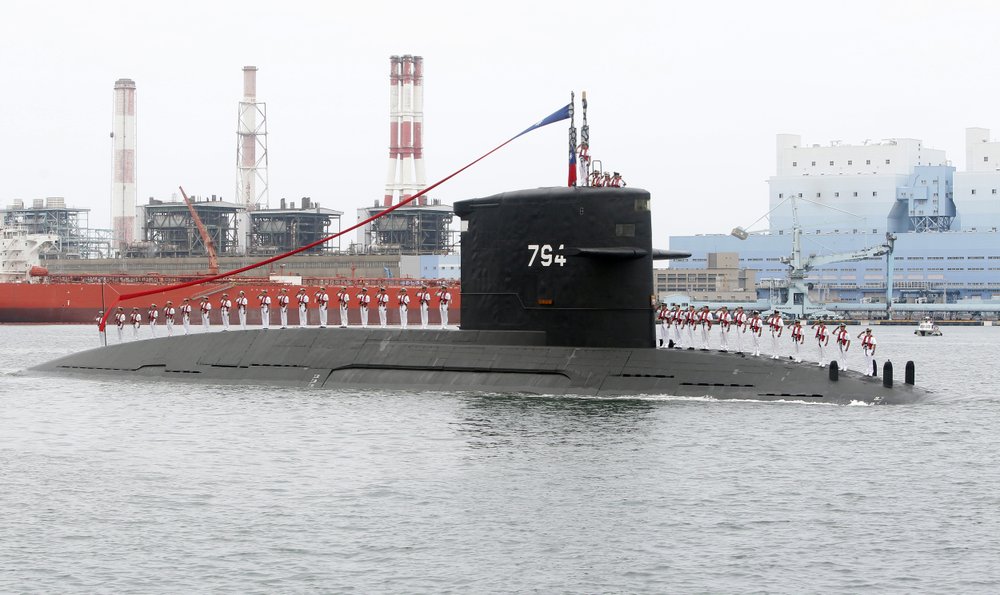
Even older than the Hai Lung class submarines are the Hai Shih class boats, comprising Hai Shih, built as a Tench class submarine, and Hai Pao, originally completed as a Balao class submarine. Both of these underwater veterans were constructed during World War II and transferred to Taiwan from U.S. Navy stocks in 1973 and 1974, respectively.
With a speed of just 15 knots when submerged, the two Hai Shih class submarines are hardly adequate for modern warfare and are reportedly used mainly for training. The boats are apparently no longer capable of diving below 328 feet and there have been reports of warped pressure hulls and metal fatigue. For some years there have been calls to withdraw these submarines, which in most other circumstances would have become museum pieces by now, from service entirely.
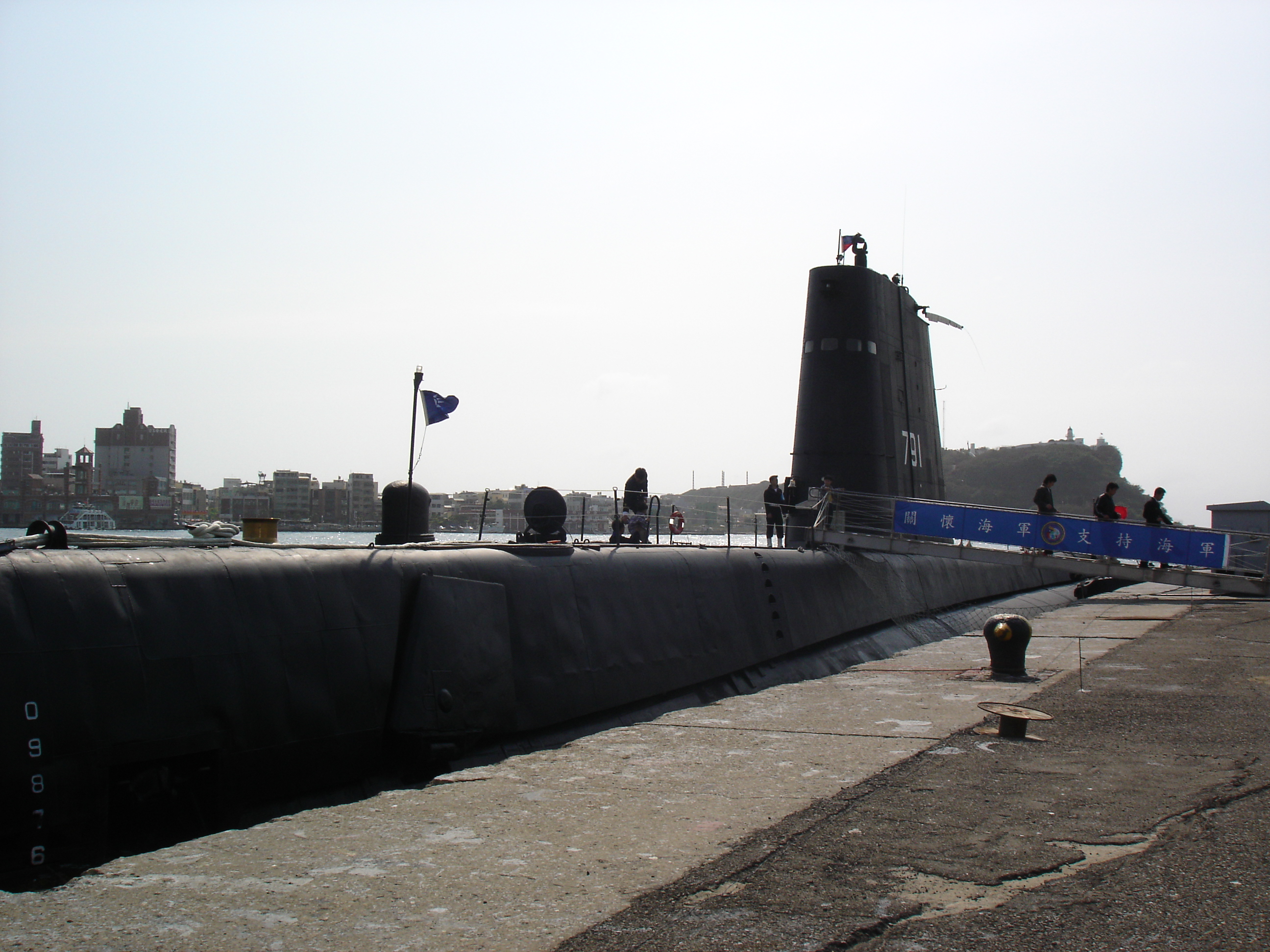
At the ceremony marking the opening of the new shipyard in Kaohsiung, CSBC chairman Cheng Wen Lung noted that Taiwan’s new submarine development program had faced considerable difficulties to get to this point, reflecting on “external forces hindering the development of this program.” This included repeated failures to secure foreign submarine technology in the face of opposition from Beijing, which considers Taiwan a breakaway province that must eventually be reunited.
In the 1990s, the Clinton administration had refused outright to sell submarines to Taiwan, since they were considered offensive weapons and therefore outside the scope of the arms sales to the island that were permitted under the 1979 Taiwan Relations Act. Instead, Taiwan had also considered building submarines on the basis of designs acquired from either Argentina or Norway, but ultimately didn’t follow through on either of these options.
In 2001, President George W. Bush authorized the sale of a major arms package to Taiwan, which included eight diesel-electric submarines, as the United States revised its stance on arms transfers in the face of what it saw as an increasingly belligerent government in Beijing. However, since the U.S. Navy’s last conventional submarine had been completed the better part of a century ago, the eight subs for Taiwan would have to have been of a foreign design, built under license, with Germany or the Netherlands being seen as the most likely sources.
Both those European governments refused to provide submarines, or their plans, to Taiwan. The Dutch stated that they would no longer supply arms to either Taiwan or the government on the mainland, while the German stance was based on the “one-China policy,” which it shared with the United States.
With no diesel-electric submarines in production in the United States, the U.S.-backed plan shifted instead to securing for Taiwan surplus submarines from another operator. Although Italy agreed to sell eight Sauro class boats in 2003, with plans to refurbish them before delivery, Taiwan rejected the offer, demanding new-build boats.
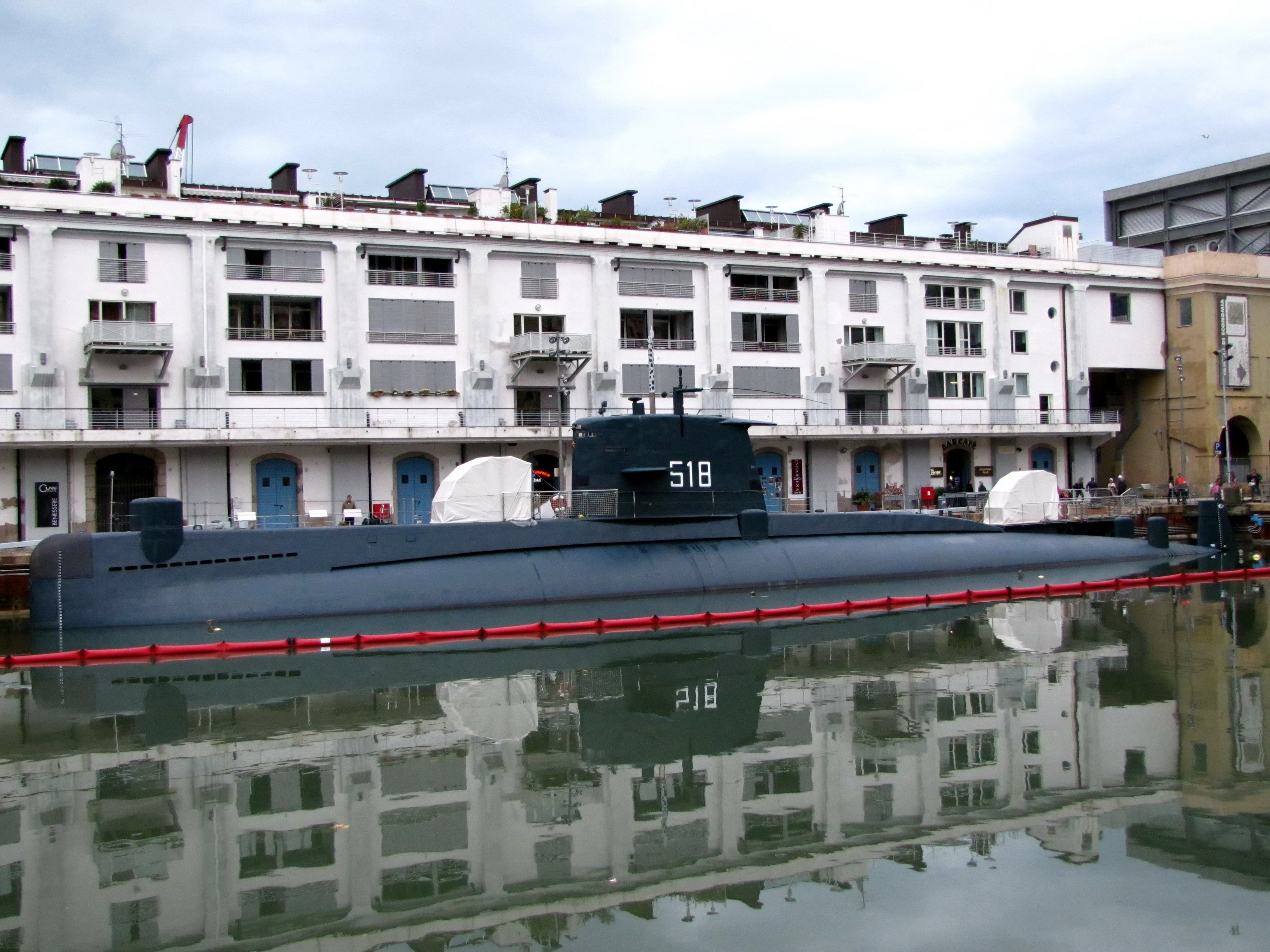
As of 2004, the U.S. proposed constructing a new class of diesel-electric submarines for Taiwan at the Ingalls Shipyard in Mississippi, most likely again using foreign plans, but this plan fell through, as well. The ROCN was left to soldier on with its existing four boats.
In the meantime, the issue of new submarines increasingly became a political football in Taiwan, as different government agencies argued over whether the future vessels should be brought from a foreign country or manufactured locally. In 2005, the country’s Industrial Development Bureau director, Chen Chao Yi, said that Taiwan was “almost able to build submarines without large-scale investment in its shipbuilding equipment.” The same official admitted, however, that the United States would still be required to provide “submarine blueprints and submarine weapons systems.”
Finally, by 2014, Taiwan decided to launch its indigenous submarine production program, with a view to having the first of eight examples in ROCN service by 2025. In 2017, President Tsai oversaw the signing of a memorandum of understanding on the construction of the submarines.
“Under the strategic concept of effective and multi-layered deterrence, subsurface combat ability is what Taiwan’s defense is most in need of strengthening,” Tsai said on that occasion. “This is a problem that everyone is aware of but which in the past we were never able to resolve.”
The major breakthrough in Taiwan’s plans to build submarines itself seems to have been the 2018 decision by the U.S. State Department to license the related technology for the island, which apparently included the boats’ combat management systems, as well as other technical assistance, but there have been no details as yet of which U.S. companies are involved.
Taiwan’s submarine-building program will also draw upon experience gained with the Dutch-built Hai Lung class, plans for which have been studied thoroughly by the ROCN. However, other foreign know-how will likely be required, too. In particular, it’s been reported that Taiwan requires assistance in manufacturing pressure-resistant hulls.
Not surprisingly, models of the new domestic submarines show clear influences from the Dutch Hai Lung class. However, details about the planned features for Taiwan’s new boats remain limited and it’s unclear if they will include advanced air-independent propulsion (AIP) systems, which would greatly increase the time they can stay submerged and make them harder to detect.
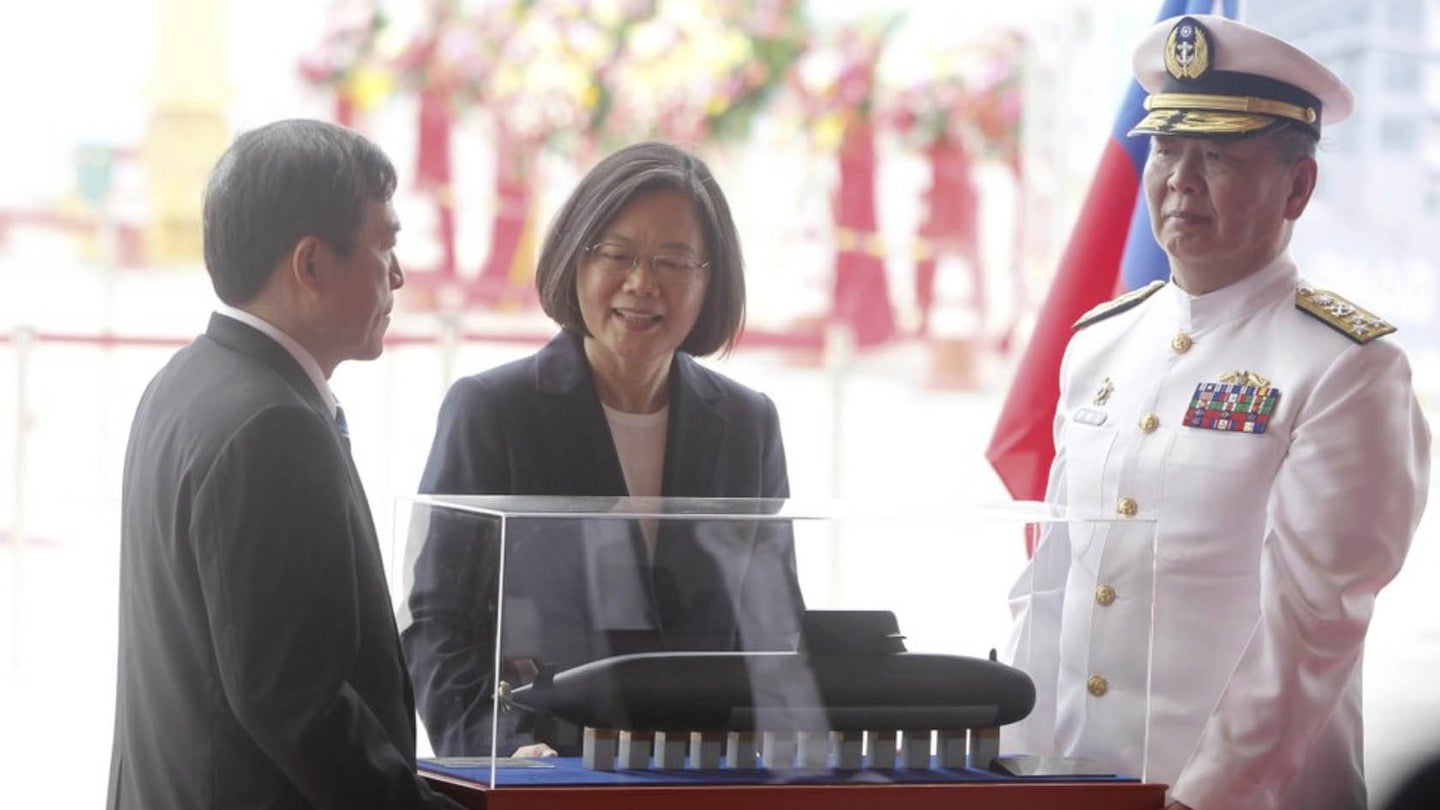
Even with a force of eight boats, plus the upgraded Hai Lung class, the ROCN submarine fleet would still be dramatically outnumbered by the PLAN’s submarine force. However, modern conventionally powered submarines have repeatedly proven their worth in multinational exercises, and there’s no doubt that a well-trained force of boats, even if it’s small, could have a disproportionate value in a conflict scenario, helping create a defensive buffer zone in the Taiwan Strait.
A beefed-up submarine force would reinforce Taiwan’s defenses that are optimized toward protecting the island from PLAN warships and amphibious assault, and which, in the future, may also include plentiful Harpoon anti-ship missiles combined with the ROCN’s stealthy mine-laying catamarans.
The very presence of the submarines would also potentially have a deterrent effect on the PLAN, which has traditionally lagged behind in anti-submarine warfare capabilities, although this is now changing, too.
Few submarine forces anywhere in the world are in quite as drastic a need of modernization as that of Taiwan, and the opening of the country’s submarine-production facility is the next meaningful step on the path towards the ROCN’s long-awaited new subs.
Contact the author: thomas@thedrive.com
